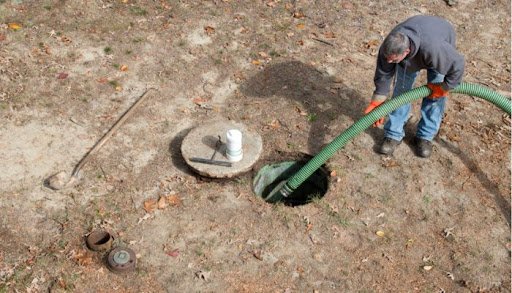Stillwell Septic And Grading Fundamentals Explained
Stillwell Septic And Grading Fundamentals Explained
Blog Article
All about Stillwell Septic And Grading
Table of ContentsStillwell Septic And Grading Fundamentals ExplainedGetting My Stillwell Septic And Grading To WorkThe Ultimate Guide To Stillwell Septic And GradingSome Of Stillwell Septic And GradingA Biased View of Stillwell Septic And GradingThe Main Principles Of Stillwell Septic And Grading The Main Principles Of Stillwell Septic And Grading
Generally, septic container installation is an intricate procedure that calls for careful planning and implementation. Property owners need to function with a credible setup group and recognize regional regulations and requirements to make certain that their septic system operates properly for years to find. After the sewage-disposal tank has actually been mounted and linked to the drain field, it is time to backfill the area.The backfill product need to be devoid of clods, large rocks, frozen matter, and debris that can lead to voids in the backfill that may permit clearing up over time. Crushed rock or pea gravel 1/2-inch in diameter is favored if indigenous products are not ideal. When the backfilling is complete, it is time to landscape the location.
Once the septic system has been mounted, it is vital to evaluate it to make certain that it is working appropriately (Septic Tank Repairs). https://www.edocr.com/v/poewgvbe/georgebraden29910/stillwell-septic-and-grading. Testing the system involves checking for leaks, making certain that the storage tank is at the ideal degree, and taking a look at the drainpipe field. Among the most usual tests carried out is the hydraulic tons test
Get This Report about Stillwell Septic And Grading
The water is after that kept an eye on to ensure that it streams appropriately via the pipes and right into the drain field. If the water does not flow correctly or backs up into the container, it might suggest an issue with the system. Another test that is typically done is the color examination.
The color is then checked to make sure that it flows correctly with the pipelines and into the drain area. If the color does not stream properly or appears in the incorrect area, it may show an issue with the system. It is vital to have a professional carry out these examinations to ensure that they are done appropriately.

What Does Stillwell Septic And Grading Mean?
Below are some important tips for property owners to preserve their septic tank: The ordinary household septic tank must be checked at the very least every 3 years by a septic solution expert. The regularity of pumping depends on the dimension of the container and the number of individuals using it. https://issuu.com/stillwellsag. A general guideline is to pump the tank every 3 to five years
Making use of water-efficient fixtures and home appliances, such as low-flow showerheads and bathrooms, can minimize water use and aid the septic tank job a lot more effectively. Just flush bathroom tissue and human waste down the commode. Avoid flushing anything else, including womanly health items, baby wipes, and food preparation grease, as they can block the system.
Stillwell Septic And Grading Fundamentals Explained
Septic storage tank installation is a complicated procedure that needs careful planning and implementation. Homeowners have to be mindful of the necessary actions included in the setup process to make sure that their septic system operates correctly and efficiently. The very first step is to assess the website where the septic tank will certainly be mounted.
As soon as the website has actually been examined, the following step is to prepare for the installment. Property owners must make sure that their professional is experienced in septic storage tank installation and will work alongside them throughout the process.
Stillwell Septic And Grading Fundamentals Explained

Homeowners need to know the essential steps entailed in the installment process to make sure that their septic tank operates properly and effectively. By complying with these steps and keeping their system, home owners can rest assured that their septic tank will offer trusted wastewater treatment for many years to come.
Virtually one in 5 united state homes have septic systems. Yours may be among them. If you're not correctly maintaining your septic system, you're not just harming the environment, you're placing your household's wellness at riskand might be purging hundreds of his comment is here dollars away! Do Your Part, Be SepticSmart: The Do's and Do n'ts of Your Septic tank.
8 Easy Facts About Stillwell Septic And Grading Described

All that extra water can truly stress your septic system. This can be useful specifically if your system has not been pumped in a lengthy time.
What Does Stillwell Septic And Grading Do?
Know your system's area. When you have the tank pumped, attract a representation or map revealing its area in regard to fixed factors - corners of the house, actions, or fencing articles. Ask the pumper to assist you locate the drainfield. Note its place on your representation, together with the location of your drinking water well.
Reduce the quantity of wastewater that need to be dealt with and disposed of by your system: Laundry no even more than one or two tons of clothes daily. Up to 53 gallons of water flooding your septic system with each load, so it's best to spread washing out over the week.
Report this page